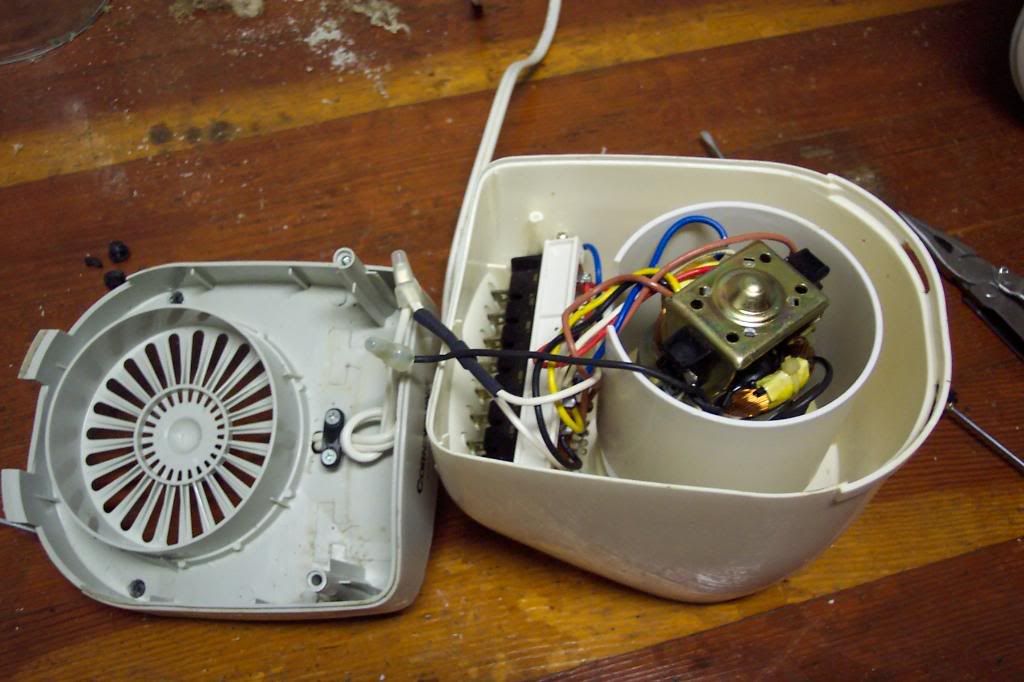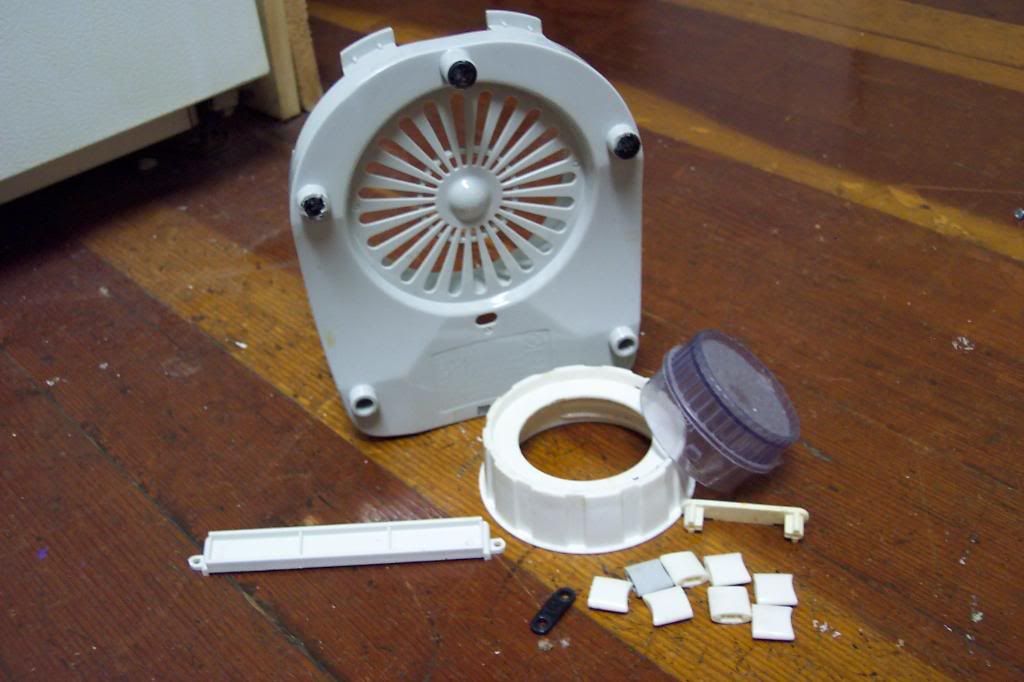Most of my disassembly fodder comes either from the sew/vac place or the campus's occasional purging of obsolete and broken electronics. These are fairly clean sources for junk, in the sense that they never have any nasty food trash mixed in with mechanical and electronic stuff. The piles outside of houses and apartments in anticipation of heavy trash day are generally 'clean,' but there's always a risk of food trash (or worse), so salvaging from them requires some discretion.
I almost didn't grab this one. It had just rained, and the junkpile that this recorder was in smelled as if it had some food trash in it, and I pretty much avoid trashpicking in anything that might have organic garbage in it. But the recorder was off to the side, and a cursory visual and smell test determined that it didn't have anything nastier than a little mud on it, so I took it back to the apartment. And washed it off, just to be sure.

All trash has a story, an object's history of use before it is discarded. Most of the time, the junked object doesn't give much indication of its 'life,' but sometimes it does. If I may play amateur detective/archaeologist for a second, the masking tape above the battery area seems to indicate that the battery cover didn't stay in place, which makes me think that at one point someone dropped the recorder and broke the latch, necessitating the quick-fix. Maybe the owner finally lost the battery cover altogether, prompting him or her to finally toss the tape recorder out.
Or not. I don't know for sure, and on a strictly practical level I really don't care. But I do think it is instructive to think about trash beyond just 'that stuff they take to the landfill twice a week.'

Anyway, I knew from previous experience with tape players that this disassembly was going to be at least somewhat more entertaining than the past few things I've taken apart. Yep, lots of little pieces, though I was disappointed in how many of the little screws didn't budge. Also, note the detatched carry handle in the upper right of the picture above. It's made of metal. You don't see that much these days.

The signal traces (i.e. printed wires) on this circuit board are much less compact than those of more modern electronics.

A few trophies that I don't what I'll do with. I like the shapes of the buttons though.





















 It's essentially a hollow box with a few other pieces inside. The thing about scanners is that there's not much to them mechanically; all the impressive stuff is electronic, and I don't know enough to know which of those components are still good, nor what I would do with them if I kept them. Steel and plastic, wheels and springs, I understand that stuff, more or less. Electronics are still basically voodoo to me.
It's essentially a hollow box with a few other pieces inside. The thing about scanners is that there's not much to them mechanically; all the impressive stuff is electronic, and I don't know enough to know which of those components are still good, nor what I would do with them if I kept them. Steel and plastic, wheels and springs, I understand that stuff, more or less. Electronics are still basically voodoo to me. Sometimes, even knowing basically what's inside something, there's still an element of surprise. Interestingly shaped pieces or unusual configurations, things like that. That's why I still bother with dead computer keyboards, despite the fact that they all work the same way. Unfortunately, this scanner didn't really have anything like that. The last scanner I scrapped had a cool pulley system to move the optical parts, complete with a length of very thin braided steel cable. This scanner had a much simpler system.
Sometimes, even knowing basically what's inside something, there's still an element of surprise. Interestingly shaped pieces or unusual configurations, things like that. That's why I still bother with dead computer keyboards, despite the fact that they all work the same way. Unfortunately, this scanner didn't really have anything like that. The last scanner I scrapped had a cool pulley system to move the optical parts, complete with a length of very thin braided steel cable. This scanner had a much simpler system. The spring is the thing bent at a right angle in the above picture. I have no idea what I can use it for on a practical level, but it's fun to play with.
The spring is the thing bent at a right angle in the above picture. I have no idea what I can use it for on a practical level, but it's fun to play with.


